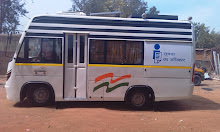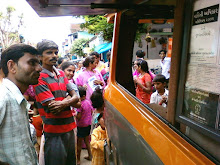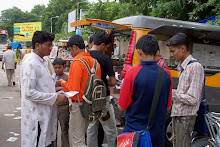First
post: Bhubaneswar: Sunday, 31 August 2014.
When the
Naveen Patnaik government orders an inquiry by the state crime branch or the
vigilance into something, you know for sure that it does not want the truth in
the matter to come out. The record of these two agencies in a host of scams,
including the multi-thousand crore mining and chit fund scams, and a spate of
political murders leave no room for doubt on that score. So, it came as no
surprise when the chief minister on Thursday ordered yet another inquiry by the
discredited crime branch into the illegal acquisition of over 100 acres of land
(the government has admitted to only 76 acres though) on the outskirts of
Bhubaneswar by leaders of his own party, including an incumbent and a former
minister, and select bureaucrats.
For good
measure, the government also announced the suspension of a sub registrar, a
tehsildar and an additional tehsildar for illegally registering the leased land
‘in violation of the lease conditions’ and even allowing the mutation of the
land on the basis of sale transactions that are ‘ab initio void’. While
announcing the suspension of these low level revenue officials, however, the
notification cleverly leaves out any mention of who the beneficiaries of these
fraudulent transactions are.
But much as
the government would like to keep things under the wraps, at least one big name
is out in the open: that of Kalpataru Das, Rajya Sabha MP and former minister,
who has had a meteoric rise since the fall from grace of Naveen Patnaik’s
erstwhile mentor Pyari Mohan Mohapatra. The Gokarneswar Charitable Trust
managed by his family has acquired three acres in the area while his son Pranab
Balabantaray has had two acres more registered in his name and the latter has
admitted as much. But the people of Ghangapatna, where the land grab has taken
place, swear that the family is in effective possession of at least 50 acres of
land in the area, at least part of which is forest land.
The sheer
audacity of the take-over has surprised many. Not content with illegally
acquiring the land, Das, when he was minister for Panchayati Raj, sanctioned an
amount of Rs 5 lakh under the MGNREGS for construction of a 1.3 km stretch of
road on a piece of land that has been categorised as ‘small forest’ and thus
required the permission of the Union Ministry of Environment and Forests
(MoEF). He even got a boundary wall constructed around the land acquired by
him.
The land in
Ghangapatna is only the latest in the series of acquisitions that Das has
managed over the years. At last count, he had acquired an incredible 41 land
plots and houses at various places in the state and outside, eight of them in
Bhubaneswar and one in New Delhi. After the CAG report blew the lid off some of
his acquisition, an embarrassed Pranab had to return to the government two
flats he had acquired under the discretionary quota.
Revelations
made by the CAG and the media in the last one month or so suggest that the
provision of the much maligned ‘discretionary quota’ has been used effectively
as a licence to acquire property in prime locations in the Twin City of
Bhubaneswar and Cuttack at throwaway prices by the powers that be. Kalpataru
Das is only the most visible symbol of the gross abuse of the provision, but he
is certainly not the only beneficiary.
Revenue
Minister Bijayshree Routray has usurped a huge plot of land given to his wife
Jyoti in the heart of the capital city for setting up a hospital. Agriculture
Minister Pradip Maharathy has availed of a house from the State Housing Board
despite having an ancestral house in the city, a gross violation of the rules
governing the discretionary quota. Not content with this, he acquired a piece
of government land contiguous to his house, which is bigger in size than the
one on which his allotted house stands. Last year, Forest and Environment
Minister Bikram Keshari Arukh (who was then the Rural Development minister) had
to return one of the two houses he had acquired under the much maligned quota.
The list is only illustrative and by no means exhaustive.
Taking the
cue from the politicians, bureaucrats too have made merry at the expense of the
deserving people in availing land or houses under the discretionary quota. An
RTI query has found that 14 IAS officers have acquired more than one house in
the Twin City under the quota in gross violation of the rules.
No wonder the
Naveen government, despite a 2002 directive of the Odisha High Court and
repeated, almost yearly raps on the knuckle by the CAG, has refused to frame
clear, unambiguous guidelines for allotments under the discretionary quota. The
court has also suggested that the government could, till the norms are in
place, go by the guidelines prescribed by the Supreme Court in the allocation
of petrol pumps. But loathe to losing the discretion to bestow favours on its
own, the government has ignored this suggestion too.
Finding
itself on a sticky wicket after a series of revelations about the gross abuse
of the provision of discretionary quota, the state government formed a Task
Force to go into all such allotments since 1995. But given the fate of the many
such inquiries in the past, nobody believes that anything would come out of it.
Misuse of the
discretionary quota took place even in earlier governments. But in Naveen’s
regime, it has been made into a fine art.






























